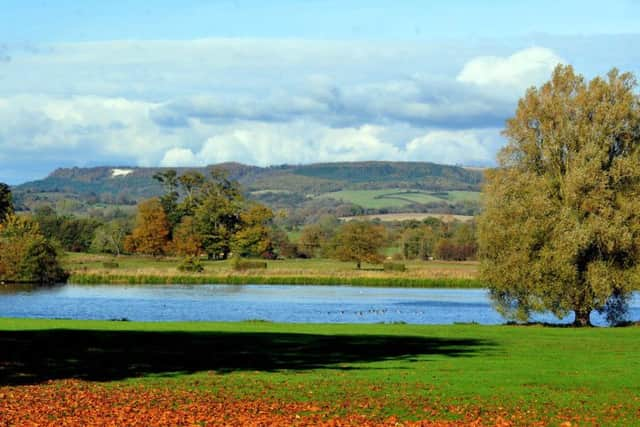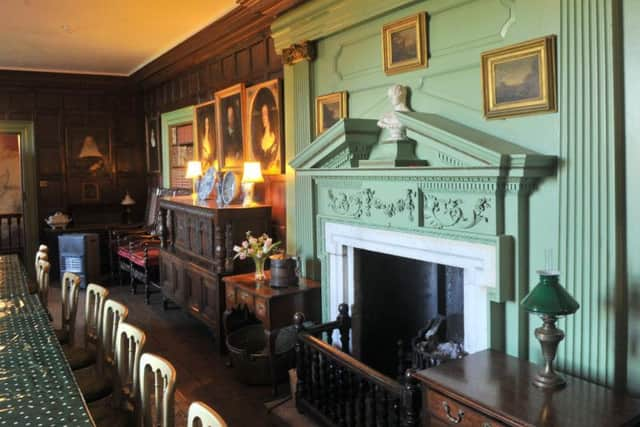Newburgh Priory: The Yorkshire country house where Oliver Cromwell is buried


The popular wedding venue in the picturesque village of Coxwold has a 'cursed' room and is reputedly the final resting place of Civil War leader Oliver Cromwell, Britain's most notorious republican.
It's been in the same family since 1538, when King Henry VIII granted the estate to his chaplain Anthony de Bellasis, following the dissolution of the priory that once stood on the site. Most of the house is Tudor in origin, with some Georgian remodelling. The current owner is Stephen Wombwell, who has been working hard to diversify the business since taking over from his father in 2010.


The legend of Cromwell's tomb
Advertisement
Hide AdAdvertisement
Hide AdNewburgh was once the seat of the Earls of Fauconberg, who lived there until the earldom became extinct in 1802. The last earl's daughter, Lady Charlotte, took ownership of the property, but she died childless and the estate passed to the Wombwell baronets, the family of her sister Lady Anne's husband.
One of the Fauconberg heirs married Oliver Cromwell's daughter Mary in 1689, and this is how the house came to be linked with the military and political leader who deposed the monarchy and formed the country's only republic.
Although Cromwell died of natural causes, when the Crown was restored his body was exhumed from its burial plot in Westminster Abbey and subjected to a ritual posthumous execution. The head was displayed on a pole and was later offered for sale, and had several owners before being re-interred at Sidney Sussex College in Cambridge in 1960.


But mystery surrounds the fate of the rest of Cromwell's body, as it was widely assumed that the corpse had been secretly moved between graves after his death to prevent it being desecrated by royalists during the republican period. Several places around the country have thus claimed to be his resting place, including Newburgh.
Advertisement
Hide AdAdvertisement
Hide AdNewburgh's case is strong, however, because of the connection to Mary. Family legend suggests that she paid a bribe to have her father's body returned to her. The remains were then hidden in the rafters, in a stone tomb inside an attic room that has never been opened and, according to tradition, must never be - meaning the corpse's identity cannot be verified and the mystery continues.
The maid in the attic


Newburgh's other ghostly legend centres on the fate of a maid who reputedly cursed the family.
In 1758, during renovation work, the house caught fire, and one of the Fauconberg sons escaped while leaving a servant trapped in a room to die.
Advertisement
Hide AdAdvertisement
Hide AdShe was rescued but suffered severe burns, and before her death vowed that if the room ever changed, the sons and heirs of the family would die young.
By 1889, Sir George Orby Wombwell decided the time was right to restore the Cursed Room - but soon after work began, his eldest son and heir, George, was killed in India, where he had been serving with the army. In 1901 his second son, Stephen, also died on active service in the Boer War in South Africa. George had three surviving daughters, and passed the estate to his brother Henry instead.
It has remained untouched ever since.
Sir George died in 1913, by which time he was the last survivor of the Charge of the Light Brigade.
Newburgh Priory today
Running a 6,000-acre estate and maintaining a Tudor building is no easy task - the annual running costs can exceed £500,000.
Advertisement
Hide AdAdvertisement
Hide AdStephen Wombwell opens Newburgh to the public in the summer months, but admits that it doesn't turn a large profit, as the house does not have a shop and cafe and struggles to compete with the likes of Castle Howard.
Other income is derived from weddings, farm and cottage tenancies, a shoot and a small glamping site, but the great hope for the estate's future is a large-scale commercial Christmas tree plantation that has taken eight years to develop. There are also plans to convert the stable block into guest accommodation and build a new wedding venue in the grounds.
“Many of my ancestors were rich but that kind of money has gone,” says Stephen.
He and his family live in a small section of the house, and he estimates that there is around £26million of restoration work that needs doing,
Advertisement
Hide AdAdvertisement
Hide AdAt the turn of the 20th century, there was a staff of 43, but that has been whittled down to mainly part-time help. There are two gardeners for the 40-acre grounds, which include a water garden and walled kitchen garden.
“We are a fairly well-kept secret and I have to be realistic in that we can’t compete with the big houses like Chatsworth and Castle Howard."
Coxwold - Yorkshire's most beautiful village?
Coxwold is the traditional estate village for the Priory, and although the Wombwell family have since sold off the tied housing stock to private owners, they retain an interest in planning matters, meaning the village has kept its unique, unspoilt character.
It's considered the most beautiful village in North Yorkshire and has average property prices of over £400,000.
Well-known houses include Shandy Hall, where author Laurence Sterne lived in the 18th century, and Elphin House, which was the home of a doctor who was friends with James Herriot.